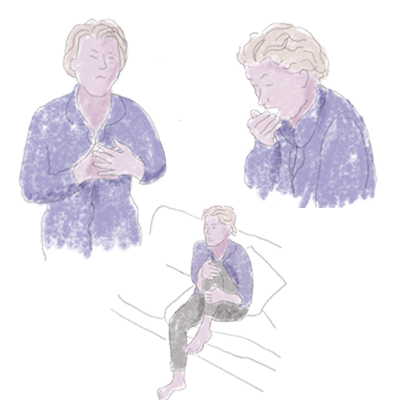The tryptase puzzle: Considerations for tryptase diagnostics

Tryptase measurements have become part of the haematological assessment toolkit for physicians, but their interpretation is only one part of the complex mast cell biology puzzle.1 So how can we utilise the potential of tryptase levels to home in on the correct diagnosis for patients? Beyens et al. set out a useful algorithm and considerations for the interpretation of tryptase levels in patients.
Introduction
In recent history, baseline serum tryptase (bST) became a reliable biomarker for detecting myeloid neoplasms, and the use of this biomarker was expected to expand.2 However, bST can also be elevated (to more than 20 ng/mL) in patients with a variety of conditions, including mastocytosis, myelodysplastic syndromes and some leukaemias, and the implementation and interpretation of bST measurements can therefore still be puzzling.1,2
There are many reasons a person could have increased bST.3 Hereditary alpha-tryptasemia (HαT) is a genetic trait where people in the general population have extra copies of the tryptase gene, and this could cause apparently healthy individuals to have elevated bST levels.4 Alone, HαT may not be problematic, though, and whether the variant is disease-causing or disease-modifying is still under debate.1,3
The presence of the HαT variant is the most common cause of elevated bST levels, followed by chronic renal failure, haematological malignancies and then mastocytosis. A host of other diseases can also cause variations in tryptase levels, including: helminthic infections, cardiovascular disease, eczema or rare genetic mutations.1 Despite the complications, tryptase tests are a simple marker and have become part of the WHO minor criteria for systemic mastocytosis (SM) since 2001.5 If SM is suspected, and a haematological neoplasm is not present, tryptase measurements are a valuable marker, as more than 90% of patients with SM have elevated bST.1,5
Using BST in 2024
A paired analysis of tryptase levels is always necessary. An event such as anaphylaxis that results in a spike in tryptase levels needs to be measured promptly followed by a baseline measurement. Acute tryptase (aST; preferably 30–120 minutes after the onset of symptoms) and bST (at least 24 hours after the acute event when no further symptoms are present) can be used to evaluate if mast cell activation has occurred. The gold standard to evaluate a paired analysis is with the consensus formula, which indicates that the aST should be increased by 120% + 2 ng/mL compared with the bST value.1
Patients with the HαT variant require adjustment to the tryptase level measured. Adjustment can be made by several methods such as dividing the bST by 1 + extra copy numbers of the gene or using online calculators.1 However, further research is required to validate these calculations and identify the optimal calculation for adjustment.6
Tryptase levels are helpful, but not always sensitive, in diagnosing SM patients who have anaphylaxis without the skin lesions typically seen in the cutaneous form of mastocytosis. A further, puzzling feature is that SM patients who manifest anaphylaxis have a lower bST than those without anaphylaxis. This is surprising and is a further caveat when interpreting tryptase results.1
Scoring tools
A number of scoring tools are available that take bST into consideration when diagnosing underlying conditions of anaphylaxis, such as: Red Española de Mastocitosis (REMA score), National Institute for Health and Care Excellence (NICAS score) and Karolinska score. The tools use differing thresholds of tryptase, but the levels need to be taken into account with other diagnostic factors. Such diagnostic factors include the presence of the KIT D816V mutation (which is only considered in the NICAS score).1
Following a result of more than 20 ng/μL on a tryptase test, and other key diseases such as kidney disease having been ruled out, Beyens et al. suggest that KIT D816V mutation testing could be carried out next.1 Tyrosine kinase reception mutation of D816V is a common mutation found in patients with mastocytosis, neoplasms and other specific cancers. This single amino acid change results in an autoactive receptor, which needs to be considered for prognosis and therapy choice.7 Tests for KIT D816V need to be highly sensitive, but again, a negative result alone cannot rule out an underlying primary mast cell condition;1 hence, this genetic test is another minor criterion for the diagnosis of SM.7
Tryptase tests can also provide further information about the underlying disease in patients. Tryptase is not correlated with symptom severity but is correlated with disease severity in SM and serves as a B-finding for high mast cell burden if it is above 200 ng/mL when adjusted for HαT.5 Such nuances need to be taken into account when assessing the weight of a tryptase measurement and the next steps for treating a patient.
Conclusion
Taken together, it is the combination of diagnostic factors (major/minor criteria or paired tryptase levels) that can lead to a successful diagnosis, and knowing the nuances and caveats of tryptase measurements can help the patient obtain a correct diagnosis faster.
Blueprint Medicines and associated logos are trademarks of Blueprint Medicines Corporation. ® 2024 Blueprint Medicines (Netherlands)
B.V.INTBP-DAXSM-24.004v1.0 04/24

